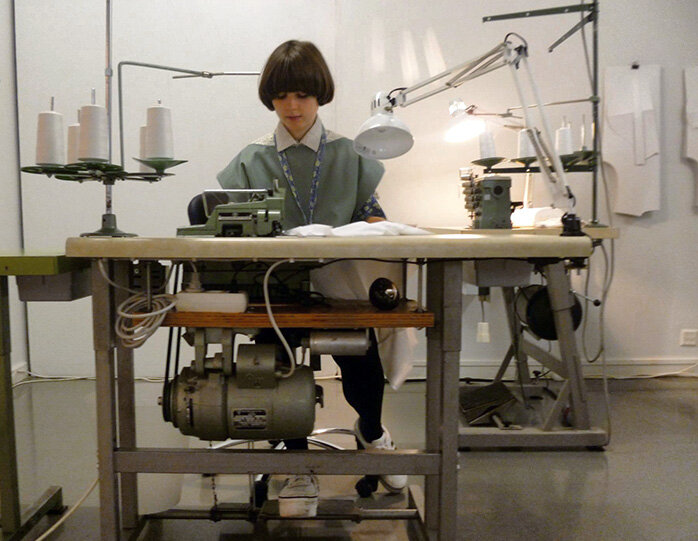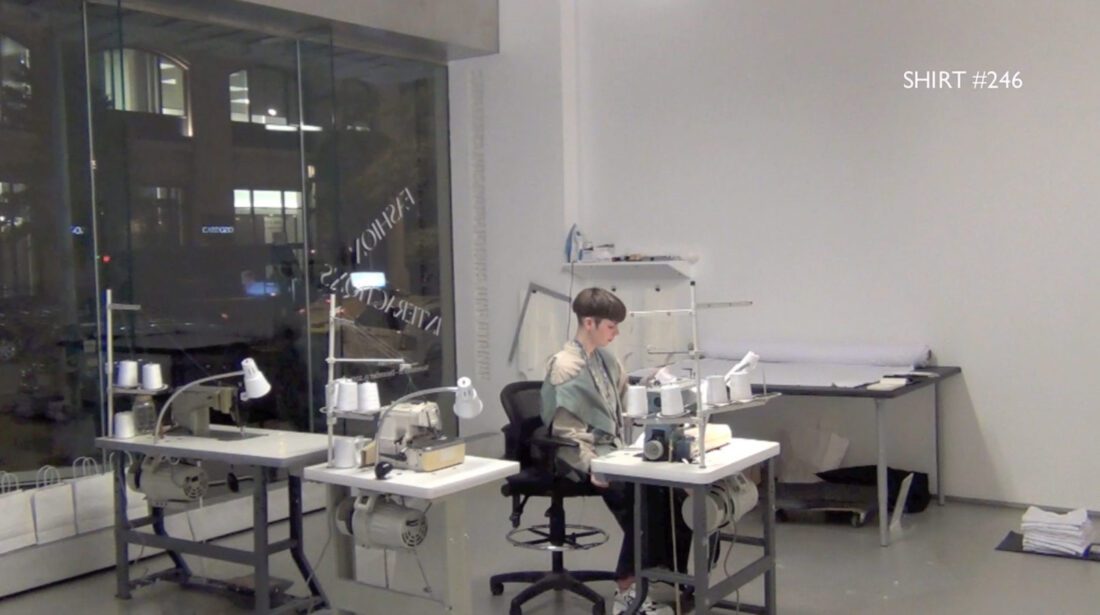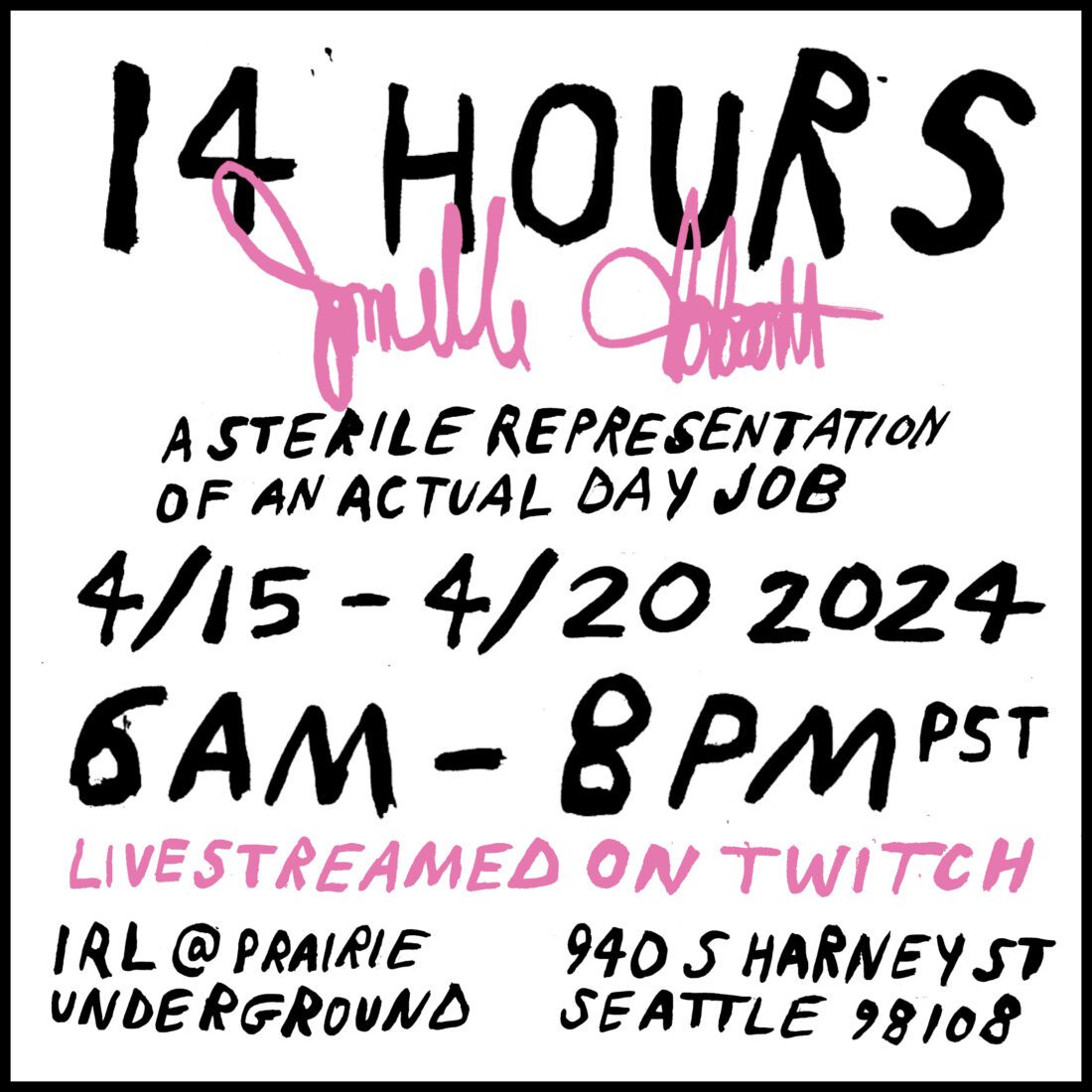
'14 hours' By Janelle Abbott

Durational performance over a decade ago where Abbott created white t-shirts in Timo Rissanen and Salla Salin’s installation “15%” at the Amos Anderson Museum in Helsinki, Finland in 2012
PERSONAL STORY
Growing up, my parents owned and operated a clothing manufacturing company in Seattle, Washington. Every garment was cut, sewn, finished, and pressed in house. At an early age, I was exposed to the internal workings of garment production and the fashion industry. I didn’t fall in love with fashion by looking at glossy magazines. My reverence for clothing comes from the understanding that human hands are behind every garment (and every consumer good, for that matter) that we engage with on a daily basis—hands so skilled that they produce garments with such machine precision that they can be deceiving. As a child, however, I saw the human at the helm of the machine. Those cutters, sewers, pressers, and office workers were my friends. The sample sewer, Connie, taught me how to sew on an industry machine before I hit double digits. Today, I sew on her industrial Juki which I purchased from her several years ago. The company closed in the early 2000s due to the post 9/11 recession, as well as all the repercussions that event had on the garment industry specifically.
My parents business experienced a significant rift in sales because the terrorist attacks occurred during NYFW—buyers fled, show rooms shut down, and boutique brands like Amanda Gray, over 20 years strong, soon succumb to the shifting tide of consumer sentiment which was now enticed by exponentially low prices offered by the influx of fast fashion brands entering the North American market. When I told my parents I wanted to purse fashion as a career, just a few years after the business closed, they were reasonably hesitant. They knew, first hand, just how fickle and difficult the industry could be. Nonetheless, they supported my pursuit and I attended Parsons School of Design where I received a BFA in fashion design. During university, I learned about the zero waste pattern drafting methodology which has become a cornerstone of my practice. I entered school with an understanding that the industry was subsidized by exploitive and slave labor, so I made the conscious decision not to enter the industry “formally” by working for a large corporation, as many of my classmates did. Instead, I have explored a practice built on an unrelenting and integrous commitment to sustainability, zero waste, garment reclamation, innovation, sentimentality, and intuition.
After 7 years of working adjacent jobs to my interest in art, design, and performance (I was a tour guide, a studio assistant, chair weaver, and yoga teacher) I finally was able to make my creative work my full time when the pandemic whipped out all my gigs, and all I had left to support myself financially was my artistic approach to fashion design and garment construction. Today, I am still working to grow my brand JRAT by creating one of a kind garments made from reclaimed materials. In the past 3 years I have produced over 1,400 garments nearly single handedly. JRAT is available at retailers such as Café Forgot, Stand Up Comedy, Bleaq, and more. I offer a garment reconstruction service to private clients called Wardrobe Therapy.
I have experience in durational performance as well. In 2012 and 2013 I performed in Timo Rissanen and Salla Salin’s “15%”—a live garment factory instillation at the Amos Anderson Gallery in Helsinki, Finland, and later at the Aronson Gallery at Parsons School of Design in New York City. My role as garment worker was to cut, sew, press, fold, and package white t-shirts within the gallery and before public on-lookers. The t-shirts were available for purchase in the gift shop for $5 each. Sold along with the t-shirts was the waste created during the manufacturing process. Often people would ask me, “How could this shirt be so cheap when I just watched you make it by hand?” To which I would respond, “Exactly.”
Janelle Abbott:www.janellerabbott.com

Performed when the show was remounted in 2013 at Parsons’ Kellen Gallery in NYC
